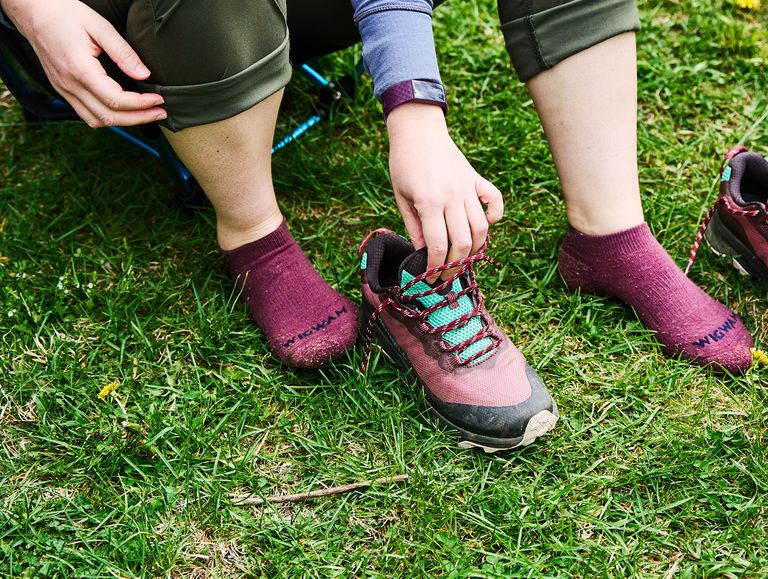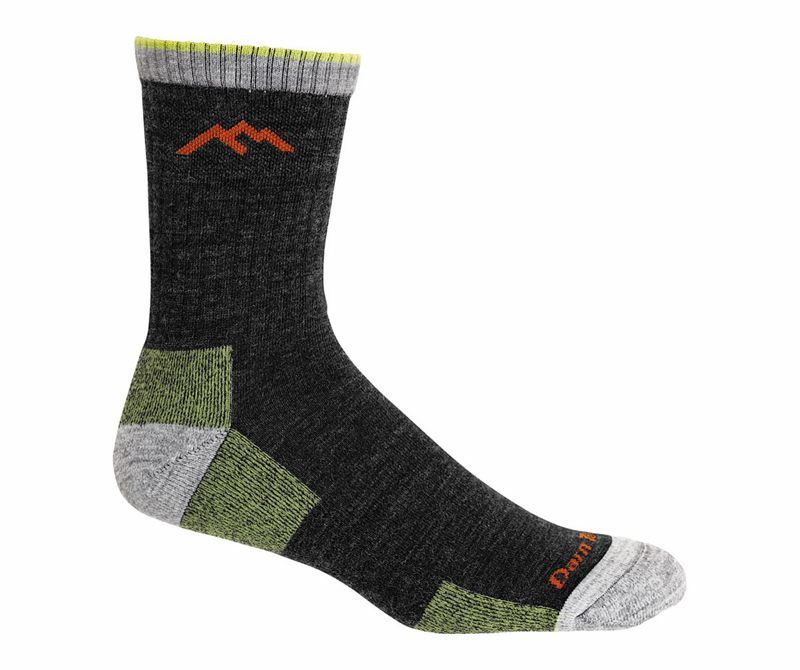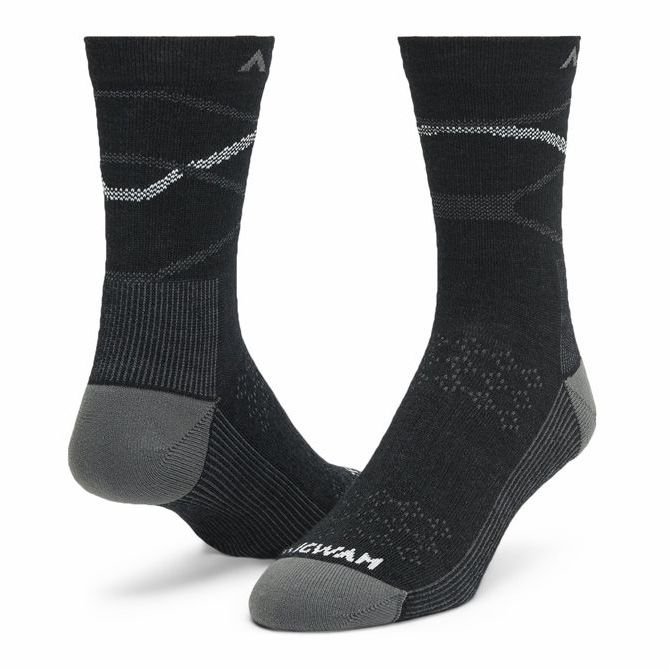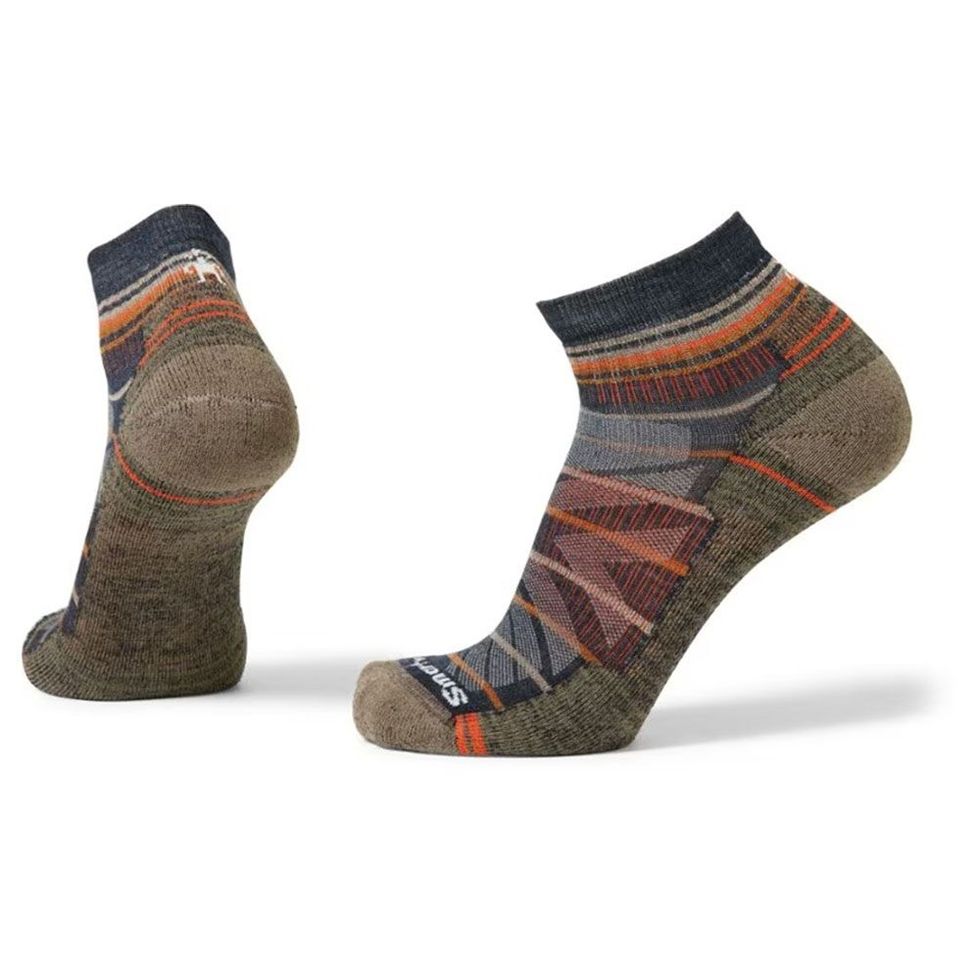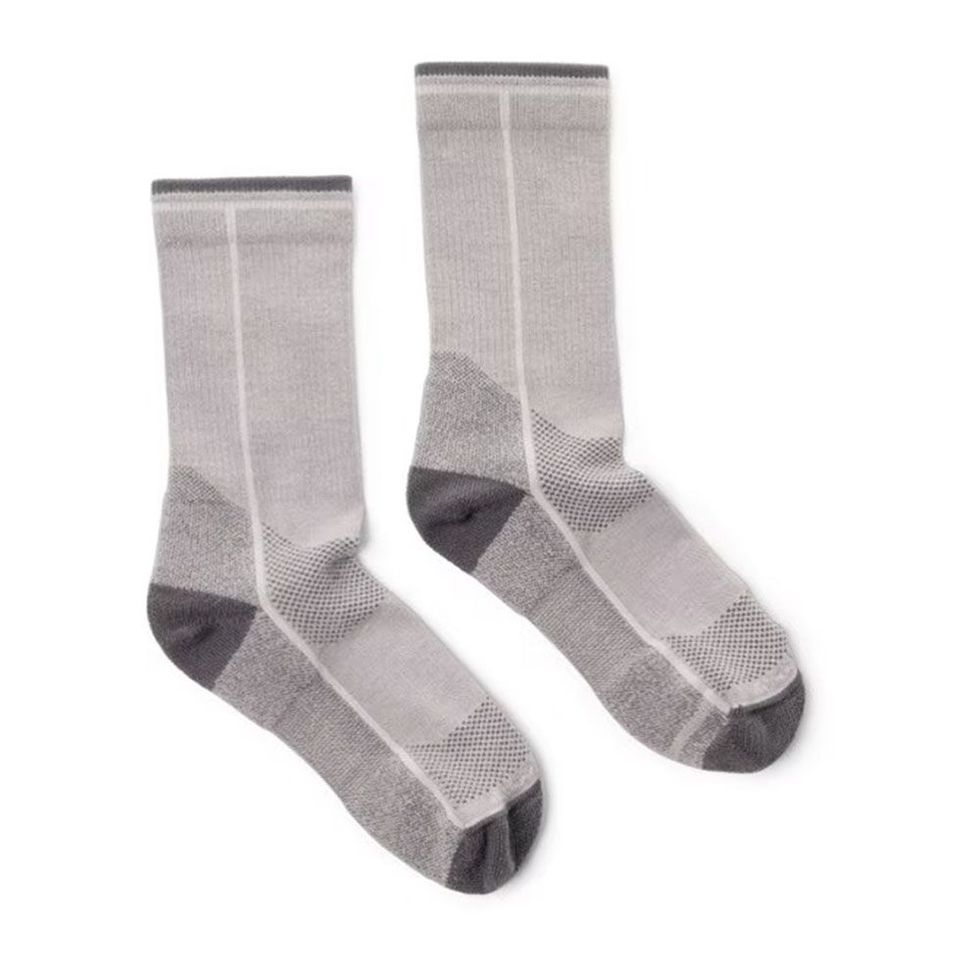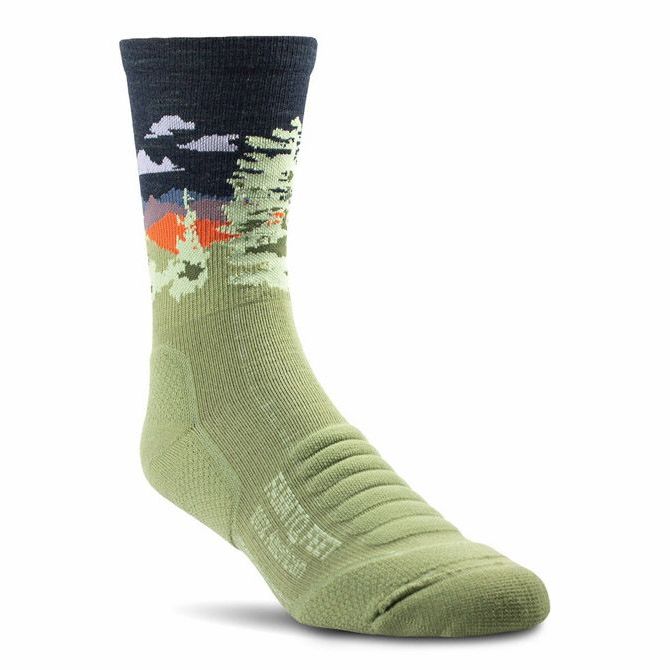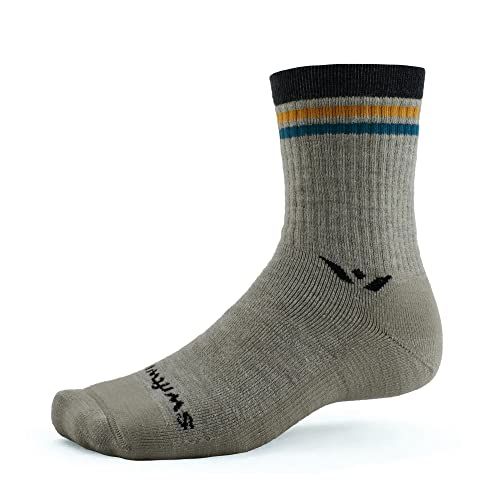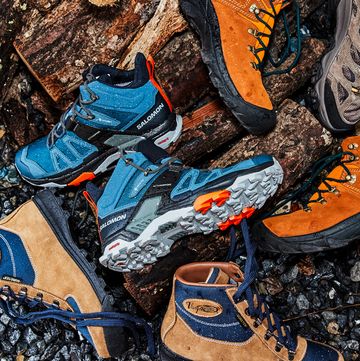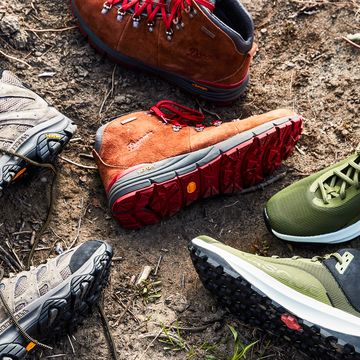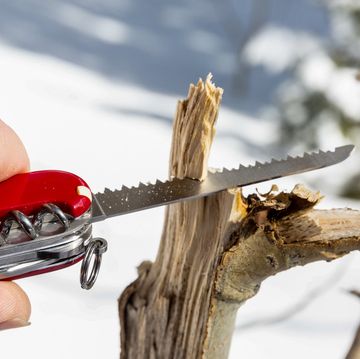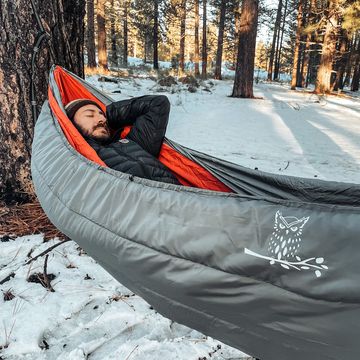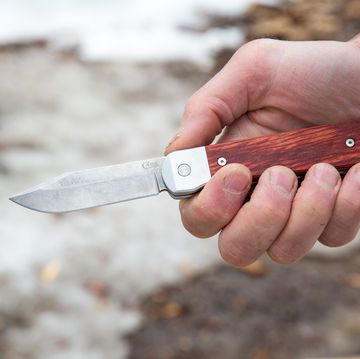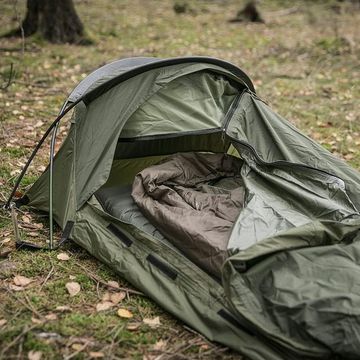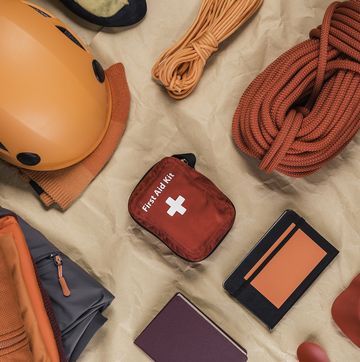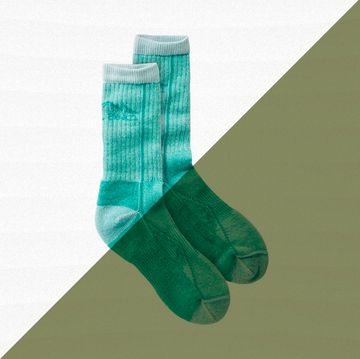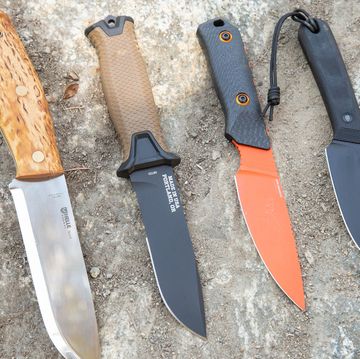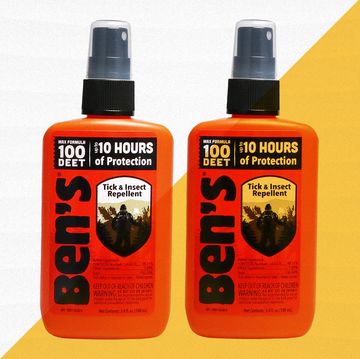Whether you are a casual weekend hiker or going on weeks-long adventures, finding the right hiking gear for head to toe makes all the difference. One of the most important pieces of gear, and one that’s often overlooked, is the socks you wear on a hike.
Hiking socks are deceptively simple—a lot goes into the construction of these fabric tubes to ensure your feet feel good (read: dry, warm, comfortable, and blister-free) no matter the conditions or how many miles are ahead. We’ve tested more than two dozen pairs of various heights, thicknesses, materials, and prices to determine which boast the best combination of comfort and protection so no unhappy feet will ruin your day.
The Best Hiking Socks
What to Consider
Prior to choosing a pair of hiking socks, make sure to consider key features such as the fabric, feel, and sock height.
Fabric
Merino Wool
Most hiking socks are either mostly wool, or contain wool in a blend. The natural fabric, usually sourced from merino sheep, has inherent benefits that are well-suited to treks through the woods, bike rides, runs, or even just a day at the office. Because merino wool wicks sweat away from your skin, you stay drier. Then, this moisture evaporates out of the sock to create a cooling effect for your feet when it’s hot out.
This wicking is just as important in the wintertime or cold environments— without it, that excess moisture could freeze, making your feel cold. What’s more, odor-causing bacteria and microbes are unable to stick onto these wool fibers, so your socks and feet won’t get that nasty, sweaty stink. This makes wool hiking socks the best choice for multi-day backpacking trips.
Merino fibers are much thinner than what was used in, say, your grandpa’s thick, scratchy sweater. They’re typically less than 24 microns in diameter, compared to a strand of human hair that can measure 25 to 100 microns. That means merino is lightweight and super soft, even on sensitive skin.
Synthetics
Other socks are manufactured with polyester-based blends. Polyester is made of two petroleum derivatives, terephthalic acid and ethylene glycol, though it’s becoming increasingly common to source these compounds from recycled water bottles or other plastics.
This material also excels at wicking moisture and dries faster than wool, which can absorb moisture up to 30 percent of its weight. If you’ll be hiking in wet weather or on a trail with several creek crossings, a polyester sock could be a better choice (though it’s no replacement for a waterproof hiking boot). Polyester is also much cheaper to produce than merino, so choose synthetic if you’re on a budget.
Regardless of the primary fabric, hiking socks normally have a small amount of elastic material, such as Lycra spandex or elastane, for compression and to help the sock stay in place on your foot. Our top pick, the Wigwam Axiom hiking sock, is made of a blend of merino wool, stretch nylon, and spandex.
Height
Choose a sock that’s tall enough to prevent your boot cuff from rubbing against your bare skin and cushioned enough for your liking.
Many hiking socks come with crew and mid-crew options, which fill most of the need for every day hikes or casual walking. Some brands offer knee-high compression socks for longer, more arduous journeys, while others have ankle socks to provide more breathability to your legs on particularly hot days.
Padding
In the height of summer, it’s tempting to pick the thinnest sock available, but padding in high-wear areas, such as at the toes and heel, can absorb impact, help prevent blisters, and extend the life of your socks.
In warm weather, look for a sock with light cushioning and mesh venting, which is typically installed on the top of the foot. A heavily cushioned sock is most appropriate for extended mileage or cold weather, but make sure your boots are roomy enough to accommodate the extra padding.
Above all, prioritize a sock that fits well. If your foot can move around within it, that shifting can cause blisters during hikes—even a small wrinkle can turn into a days-long sore. Many socks come in gender-neutral sizing, whereas others are specifically made for men or women.
Getting rid of old socks? Recycle them through Smartwool’s Second Cut Project, which turns socks in any condition and color into new products like dog beds.
How We Selected
In the past two years, we’ve worn 26 hiking socks over hundreds of miles, mostly in eastern Pennsylvania and the mountains of Vermont. These socks have been thick and thin, ultra short and knee-high, and made with various materials like wool, polyester, and even cotton. We recommend mostly socks with merino wool in their composition due to its moisture-, temperature-, and odor-management properties.
Our testers hike year-round across various terrain, including muddy, root-strewn trails; dry, rocky routes; snow-covered fields; and paths that involve multiple creek crossings. Because hiking socks work in tandem with boots, we paired the contenders with multiple shoes to more clearly suss out the strengths and flaws of the socks themselves.
All the while, we took notes on how good they felt on our feet, paying attention to fit, bunching, temperature and moisture management, and cushioning. We also evaluated durability and cost.
For options that were not tested directly, we put in significant research and read through hundreds of verified customer reviews so we only recommend the best hiking socks on the market.
When the SynchroKnit line from Wigwam joined the fray in early 2020, it promised a better-fitting sock on account of a patented construction method that reduces stitching throughout for a contoured feel. First to market was the Surpass, a fully synthetic sock we liked well enough.
Then we got our hands on (or rather, our feet in) a sample of the merino wool-blend Axiom. It quickly rose to the top of our sock rotation and hasn’t budged since. The merino adds a softness that’s missing from Surpass and fights stink better, too.
Still, the diminished bulk and a good amount of spandex made the gender-neutral Axiom feel snug in all the right places, namely the arch, heel, and calf. We liked the sock’s medium compression, especially on high mileage days, but it might not be to everyone’s taste.
The thinner build, which has targeted padding at the toes and heel, also lent breathability on hot days. Importantly, the fewer stitches haven’t negatively impacted durability. The fabric has pilled a little, but our sample sports no other signs of wear after many months of use. Ultimately, the Axiom proved to be more comfortable, more affordable, or both compared to the competition, making it a clear choice for our top spot.
If you prefer a bit more padding, there’s no better move than buying a pair of the Hiker Micro Crew socks. We found that, with many cushioned socks, the thicker wool often means more heat buildup, and therefore increased sweat and discomfort. Thankfully, this isn’t the case here.
We noticed that our feet got less sweaty in poorly ventilated boots than when we wore other similarly padded socks and had no issues when we donned the Micro Crew in a well-ventilated boot. The merino-nylon blend is thick and soft, with comfortable squish underfoot and compression at the heel, arch, ankle, and lower calf that keeps the Micro Crew from sliding down and bunching.
If you’re the kind of person who likes to wear their socks at night on a backpacking trip, be warned: You might wake up with marks on your legs from the sock’s firm hug.
While several socks on this list come in at over $20, Wigwam makes a great, more economical pair without sacrificing performance.
The Arbor is thick where you need it to be for durability and thin where you don’t for breathability. Reinforced heel and toe caps keep the sock from wearing out, and mesh under the arch provides venting. The arch is also elasticized to allow the sock to move as you step but prevent it from sliding around within your boot.
This unisex sock has a built-in olefin liner, a synthetic material so tough it’s often used in carpets. While it’s not common to see it in socks, we found it wicked sweat well and felt great on our feet. If you straddle the line between sizes, we recommend buying down to better align the heel cup with your foot.
This standout Smartwool sock is ultralight and extra breathable. That makes it a natural choice for anyone who wants as little sock as possible. The low-cut Ankle is ideal for hiking shoes, but the taller heights are just as good if you prefer boots or want greater protection in the field.
We especially liked the four large zones of mesh at the top of the foot that kept the sock dry at all times. There’s a thin layer of padding from the toe through the achilles with extra cushion at the toe box and heel. It was just enough for absorbing impact when we hiked longer than a few miles but not so much that we found ourselves overheating.
The tailored, gender-specific fit added to the comfort for our female tester; the women’s version is slimmer with a narrower heel. This hot-weather winner is more expensive than other socks but well worth it for its superior ventilation.
Although it’s not as thin and light as the name suggests, the Tech made for a good daily hiker. The sock has a layer of cushion underfoot with extra padding at the ball and heel. We enjoyed the protection, especially because it didn’t interfere with temperature or moisture regulation. Credit the all-synthetic fabric blend, which doesn’t retain sweat like wool does.
As an eco-friendly bonus, the unisex design is made with recycled polyester. The sock has less compression than some others, but we didn’t experience any slipping while wearing it. Spandex installed at the arch likely helped keep it in place.
A former Editors’ Choice winner in previous buying guides, the mid-crew Cascade Locks combines comfort, great styling, carefully placed padding, and a nice fit.
It’s snug, so you won’t need to adjust it at all during your hike. That’s achieved with slight compression from the lower calf down to the arch and bolstered by Farm to Feet’s plaiting, a construction where stretchy nylon yarns that grip and flex with your foot are sandwiched between softer wool yarns for comfort.
The hardy nylon base also allows Farm to Feet to add different padding and designs to individual parts of the sock. Take the padding on the top of the foot, which we loved for how it prevented rubbing against the boot tongue, and the light cushioning under the heel. Plus, the gender-neutral sock, by virtue of its merino, wicks moisture well and proved durable thanks to its tight, dense knit, showing no wear throughout our testing.
We’re picky about our backpacking clothes—with good reason. Once they’re in the pack, we’re stuck with them until we make it back to civilization. But we don’t second guess bringing (or most often, immediately wearing) Balega’s Blister Resist Crew socks.
The tall height pairs well with a high-cut backpacking boot and offers protection in overgrown brush. And we like the balance of medium padding underfoot and the thin elasticized rib-knit on the top of the foot through the calf that secures the sock in place. It felt lighter and didn’t bunch up inside boots. Still, the gender-neutral Blister Resist had cushion where we wanted it, including extending up the achilles.
We felt slightly warmer in this sock compared to others, but the Blister Resist didn’t wet out. Credit the mostly synthetic construction that includes a proprietary wicking fiber.
We liked that Balega also adds mohair—a wool sourced from angora goats—for softness, odor resistance, moisture management, and durability. It’s a hardy blend that hasn’t shown signs of breaking down despite our several months of use.
A great winter sock, the Hiking Heavy Crew left our tester raving. Padding on the sole from toe to heel joins plenty of cushioning in the rest of the sock for an ultra-plush feel, and minimal compression amps up the cozy factor.
The unisex sizing created a slightly loose fit, but it didn’t lead to slippage within the sock or bunching. With so much cushioning, this sock is very warm and kept our toes toasty in sub-freezing temps.
The Swiftwick Pursuit Hike Six MD hiking socks come with a mix of both merino wool and olefin fiber to wick away moisture quicker and more efficiently than many other options in the same price range. The mesh footbed on the hiking socks also reduces moisture accumulation, letting heat and sweat pass through easily. While we haven’t tried these yet, the construction and materials are consistent with high-performing moisture-wicking at the right price.
Alongside the moisture-wicking features, the Swiftwick hiking socks come with seamless toes and a Y-shaped heel. The seamless toes reduce friction at the front of your foot while the Y-shaped heel fits more naturally around your ankle to prevent bunching or slipping. These features in combination with the moisture-wicking design, help the socks prevent blisters, even on longer or even overnight hikes.
The Bombas merino wool hiking socks are designed for comfort and breathability above all else. The hiking socks are designed with a honeycomb texture around the center of your foot that both improves moisture regulations by releasing heat and sweat, as well as compresses for better arch support. We haven’t tested these yet, but we’re big fans of Bombas other socks and these hiking socks are just as promising.
The Bombas socks also come with light, but strategically placed cushioning. This allows the socks to offer you support where your foot needs it most without weighing it down or trapping heat in. Bombas also stands out as a brand because it donates a pair of socks for each pair sold, which may be a big point of interest for more conscientious shoppers and hikers.
James Lynch is Popular Mechanic’s Field Editor looking for stories across the U.S. about those building a better America. He’s passionate about the Erie Canal and the Apollo Space Program.

Adrienne Donica tested hiking, camping, and other adventure gear as Popular Mechanics' outdoors editor, before going on to edit gear reviews for Popular Mechanics, Runner's World, and Bicycling as Expert Reviews editor. Find her on the trail, working on her latest cocktail project, or eating mint chocolate chip ice cream.

Tom Price is an Associate Editor of Reviews for Popular Mechanics, and also contributes to Runner's World, and Bicycling. He has previously covered product reviews, startup news, and even professional wrestling. In his free time, he enjoys watching pretentious TV, low-brow movies, and exercising for beauty, not health. If you are interested in exploring more of his work, check out his website.
